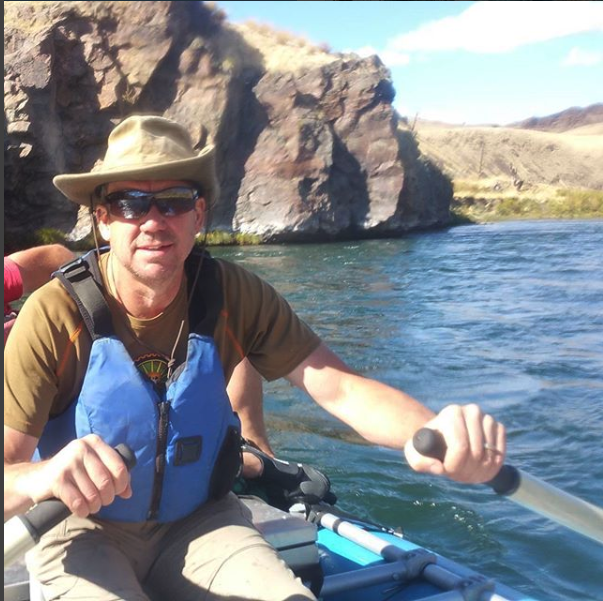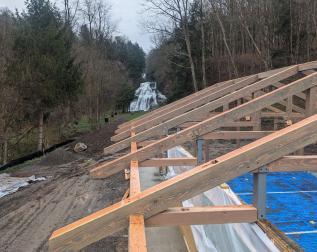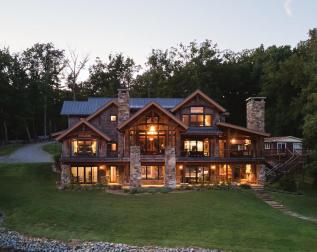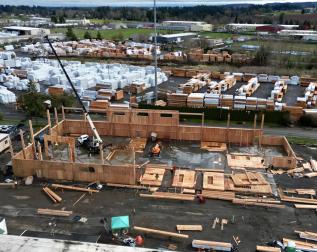For years I’ve resisted writing this post. It can come off as very self-serving. Please don’t let it. Instead, I’ll attempt to be as neutral-valued as I can, and share some of my 30-year history, and perhaps just a tad of the experiences, and sometimes frustrating stories, our clients have shared…and some that I have witnessed.
The timber frame industry has a great many good people in it, associated with it, and as I’ve often said, many of the coolest clients I can imagine. So first, think about a timber framer who is involved with the Timber Framers Guild. At our Guild conferences and our meet-ups, in the committee work we do, in the publications we create, two important things occur: we learn, and are better professionals because of it; we share, and our craft is better for it. In both cases you win.


And when you ask, “Is your company a member?” be sure to dig just bit deeper. Do you attend the conferences? Do you send your shop folk and your designers? Do you give, as well as receive?
Next, read the design contract carefully. Design is a sacred thing, deciding not only how much money you’ll spend, but how your house will “live” on its site for a long time, and how you will live in it, for also a long time. Wow. That’s a great deal of responsibility. If the design fee seems like a hell of a deal, too good to be true, it likely is. Being handed a poorly thought out re-hash of a lowest-common-denominator plan that is the wrong way to start the project. Honestly, we see this too often. A builder or even a timberframer led design effort is problematic. Design should be by designers. There are qualified architects out there carefully trained in their work. They need to be properly compensated and communicated with, and in return, you should expect a quality process and good communication. We really enjoy our relationships with these architects.
For many people who want a timber frame, hiring a timber frame company with in-house design capacity is valid. While the bulk of our work nationally comes from independent architects, our own design teams on both coasts represent a vital and thrilling part of our business. We’re not the only company to offer this service, though we have for 2 decades. This is where you need to dig into the timber framers on your short list for the details: What makes the in-house architect or designer qualified? What exactly is included in your design proposal–and what is not? Why exactly is it set up this way? Is a site visit included? Can you see an example of work at each level: schematic, design development, and construction documentation? Is checking with the local building code official included, is engineering included, and if not, how will that be handled? And…grrrrrr, this one really gets my blood boiling…do you have the rights to the plans if you decide to NOT use that particular timber framer? There are a few large and aggressive firms out there without the integrity, or maybe without the self-confidence, that try to rope the client into having to use them if they want to use the plan. Frankly, this disgusts me. We like to say that our job is “to bring the house inside of you, out,” so you can see what it looks like before you build. It’s YOUR house, you should able to use the drawings that you’ve paid for, even if you don’t choose us to craft it.
Next on my long list is the timber frame design and fabrication. It doesn’t really matter whether you choose a shop with a complex CNC (computer numeric controlled) milling machine or one that uses only hand tools, plugged in or not. Both can be done well. The key is in the design aesthetic, the structural details, the quality and options of the timbers, and the raising itself. Like the architectural design, the timber frame look is critical. Curves or not; bigger or smaller posts and beams; the shape, or even existence, of bracing; the relationship of partitions to timber. It’s exciting and rarely does good design at this point cost you extra.
Engineering also comes into play here. Both legally and ethically, timber frames should adhere to a set of carefully worked out and nationally accepted standards. While we can learn and be inspired by the past, we are legally required to give you timbers that meet 3rd party grading rules, and the joinery should withstand scrutiny by a qualified professional engineer. These guidelines vary tremendously based on what seismic zone you are in, what your snow load is, and the particular span and details of the timber frame itself. Once again, ask your timber framer if his engineer is part of the Timber Frame Engineering Council of the Guild. He or she should be.
As a total wood geek, I love to discuss timber species, grades and perhaps most importantly, dryness. You should ask questions about all of these, and not settle for what seems like a glossing over or pat answer. Species are plentiful and grade is about structure and looks. Both are somewhat personal choices. Dryness, though, is simply financial, and you should be fully aware of the tradeoffs between green, fresh sawn timber that will shrink and check the most, and other options that will be more stable. From lowest cost and least stable to highest cost and most stable the list is: green/fresh sawn, conventional kiln-dried so the exterior is about 19% moisture or so, radio-frequency kiln dried to a more even 16% or so through and through, to reclaimed and re-sawn timber that is the most dry and stable. As this is a bit more complex a topic than just these few sentences, feel free to ask me. Go ahead. Of course, this is why I never get invited to cocktail parties…
In some ways, doing high-quality joinery is the easiest part. This isn’t to discount the huge effort and high craft exhibited throughout our industry, but we’re timber framers and craftspeople. We do good joinery. If you have concerns about this area, run, don’t walk from whoever you are interviewing.
And what about the raising? This is another area where there is a wide range of choices, and something else to use to compare timber framers.

For 30 years, we’ve raised our own frames. The idea that a builder-dealer or a rough carpentry crew can do it even close to the efficacy, precision, or safety that a well-trained crew of timber framers, who work together as a team every day, can is a myth. The only one who profits from sending out a frame package without a raising crew is the company owner. It’s easier to not have to think about all those travel and site details. For us, though, it is truly the raising, done by those of us who have worked so hard to design, engineer and cut the frame, that makes this the best construction job in the world. And please note, we really like raisings in Arizona or the Caribbean come about February.
As a bonus, we suggest you look at the peripheral services your potential timber framer has to offer. It can be a bellwether as to how deep the commitment to continual improvement is; their knowledge of the building systems and envelope options that you should know. We’re big believers in the longevity and high performance of the shell around your timber frame. And now that so many of our projects are hybrid, it is more important than ever to understand the options for wall and roof construction to increase comfort, lower bills, and place less stress on our resources. For instance, we are Passive House trained and work hard to get you close to net zero in energy use.
Finally, look at the company culture, organization, and health. Is it large enough and experienced enough to do what it says it will? On the other hand, is it so large that you’re only talking to an occasional dealer-type, or maybe you only talk to someone in sales? The balance is difficult.

Look for a company that is robust enough to overcome the many obstacles life and business throws, but accessible enough to speak to the owner or group leader on a regular basis.
So that says it. It’s true, the above turns out to be flat out self-serving. We like our company’s attributes: 30 years in the industry, board-level involvement in the Guild, facilities on both coasts, long time coworkers who rank as the best in the industry, 80% of our yearly workload coming from repeat, referral, or word-of-mouth (or what we call our goodwill group). More than that, we appreciate who we are: an employee-owned company whose decision making is based on the Triple Bottom Line of People, Planet, and Profit, understanding that it takes an eye on all three to fulfill our responsibilities to you, to our coworkers, and to the future.
Ask us anything. We’d appreciate it.
–Jonathan














